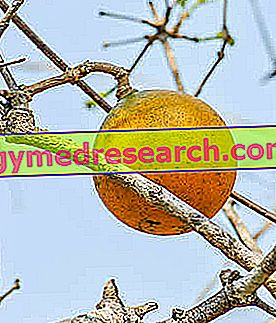What is that
When we talk about Ignatia amara, nowadays, we want to indicate mainly a particular homeopathic remedy used for the treatment of some disorders of the nervous system.

Bitter Ignatia is considered toxic due to the alkaloids it contains; for this reason, it finds no use in the medical and phytotherapeutic field. The only approved use of this plant concerns the homeopathic field.
Curiosity
According to some authors, the name "Fava di Sant'Ignazio" was given to the seeds of the plant by a German Jesuit (Father Kamell), a missionary in the Philippines, who first introduced the plant in Europe.
Other authors, instead, attribute the introduction of the plant in Europe to a Jesuit of Spanish origin.
Features
Characteristics of bitter Ignatia
The Ignatia amara - or Strychnos ignatii - is a climbing plant belonging to the Loganiaceae family, originally from the Philippines but also cultivated in China and India.
The drug consists of seeds (erroneously called "fave"), which are immersed in a gelatinous pulp inside the fruits. The fruits are yellow berries, of varying sizes but which can reach 13 centimeters in size.
As mentioned, the Ignatia amara is a climbing plant that grows on shrubs and can reach a length of up to 20 meters. The leaves are broad, ovate and opposite. The flowers are gathered in inflorescences and are generally white.
Chemical composition
Active substances contained in Ignatia Amara
The main components of bitter Ignatia and, in particular, of its seeds, are:
- Alkaloids such as strychnine, brucina and vomicina;
- Iridoid glycosides such as loganin;
- Caffetannic acid;
- Sucrose;
- Starch.
Alkaloids analogous to those contained in the Ignatia amara are also present inside the seeds of walnut vomica, another toxic plant belonging to the genus Strychnos .
Toxicity
Toxicity and Symptoms of Poisoning by Ignatia Amara
The toxicity of bitter Ignatia is attributable to its alkaloid content, among which the strychnine and the brucina certainly stand out.
These alkaloids act as competitive antagonists of glycine, a particular inhibitory neurotransmitter of the central nervous system and spinal cord. Because of this antagonism, glycine is unable to bind to its receptors, therefore, it is no longer able to exercise its inhibitory action. This leads to the excitation of the spinal cord and the appearance of prolonged and extremely painful muscle contractions. These contractions can involve both the flexor muscles and the extensor muscles, causing considerable damage.
Other symptoms associated with the poisoning of Ignatia amara are:
- Anxiety;
- Excessive increase in reflexes;
- Breathing difficulties;
- Difficulty swallowing;
- lockjaw;
- opisthotonus;
- Tachycardia;
- Increased body temperature.
In cases of more serious poisoning, death can occur due to cardiac paralysis and / or respiratory paralysis.
Homeopathy
Ignatia amara as a Homoeopathic Remedy
Despite the high toxicity of the plant, the use of bitter Ignatia is allowed in the homeopathic environment. This is made possible by the fact that the homeopathic preparations based on Ignatia amara are extremely diluted, so as to be not dangerous to health.
The homeopathic remedy Ignatia amara, in fact, is obtained following a long series of dilutions and dynamizations made starting from the mother tincture of the seeds of the plant, previously dried and powdered.
The main uses of the Ignatia bitter homeopathic remedy concern the treatment of disorders of the nervous system and others related to emotional instability, such as:
- Intense asthenia that manifests itself after a great emotion;
- Depressive states resulting from great pain, caused - for example - by the loss of a loved one;
- States of fear;
- Rapid mood swings;
- Restless sleep or insomnia;
- Headache.
In addition to this, the homeopathic remedies based on Ignatia amara are also used in the treatment of digestive disorders, respiratory disorders (spasmodic cough), menstrual pain and cardiovascular disorders (emotional tachycardia, palpitations, sense of suffocation).
The Ignatia bitter homeopathic remedy is available in the form of granules or oral drops in different dilutions. The type of dilution to be used and the dosage of the product must be established by the homeopath on a strictly individual basis.



